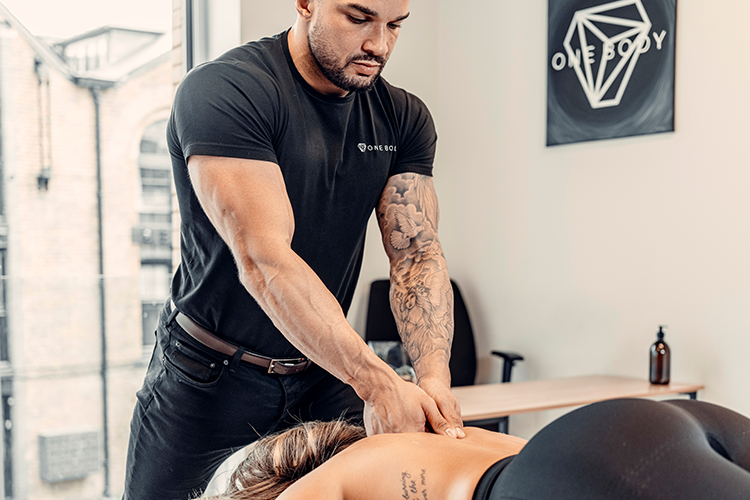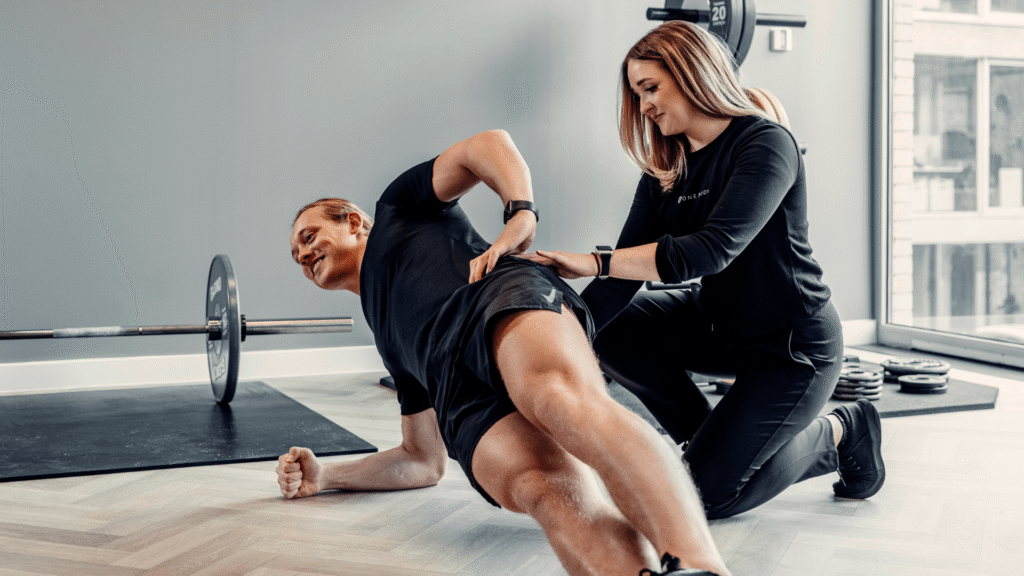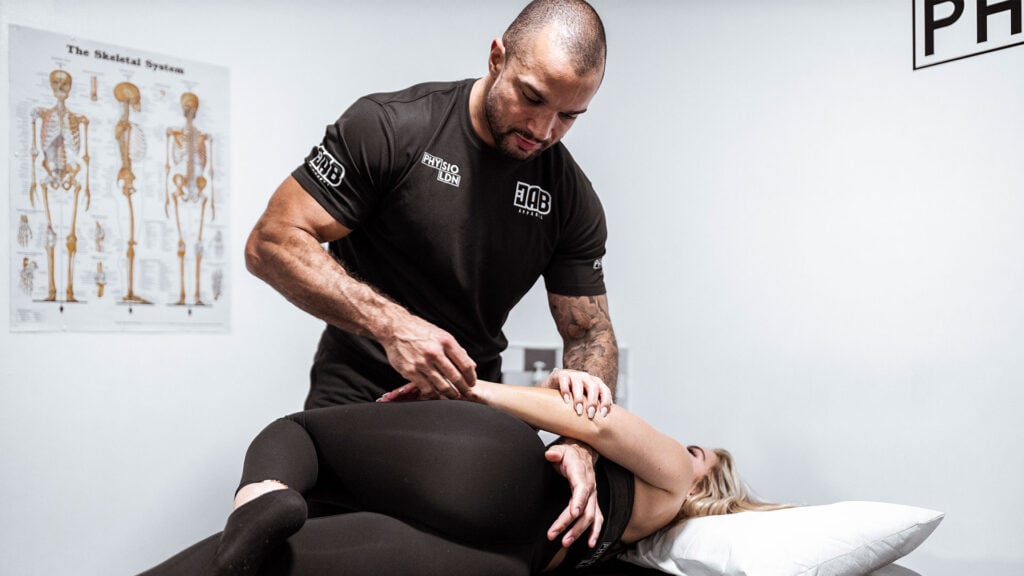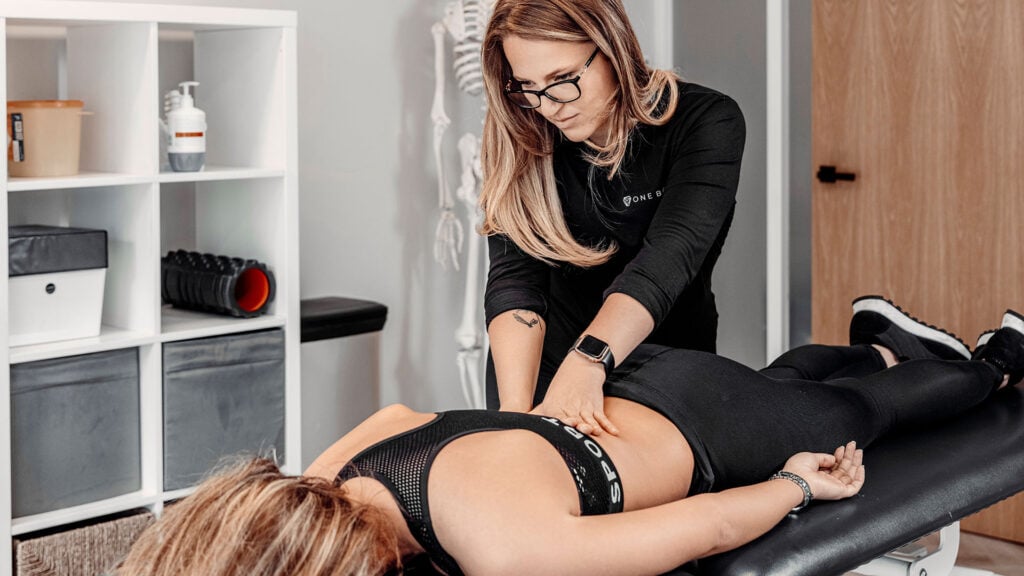Table of Contents
Main Takeaways
- Walking is usually beneficial, but poor posture, weak core, or tight muscles can trigger lower back pain.
- Surfaces, footwear, and walking intensity affect spinal strain and may worsen discomfort.
- Correct posture — head up, core engaged, neutral pelvis — prevents pain and supports healthy movement.
- Walking 80–130 minutes per week, combined with pain education, reduces recurrence by nearly 28%.
- Physiotherapy offers tailored rehab, massage, and exercise programs for lasting relief.
Lower back pain affects a significant portion of the global population, with estimates suggesting that approximately 9–12% of people, or around 632 million individuals worldwide, experience it at any given time. Nearly a quarter of people report episodes of low back pain within any one-month period, highlighting how common and disruptive this condition can be. Walking, often recommended as a low-impact exercise, can paradoxically be a trigger for lower back discomfort in some individuals.
Understanding why walking might cause or exacerbate lower back pain is essential for managing symptoms and maintaining mobility.

Recent studies have shown that while walking is generally beneficial, improper technique, posture, or underlying conditions can lead to pain. In fact, an individualized walking program has been found to significantly reduce lower back pain when combined with expert guidance.
This article explores the reasons walking can trigger lower back pain, how to improve posture while walking, and practical tips for pain-free daily movement. For those seeking expert physiotherapy support in London, clinics like One Body LDN offer lower back pain specialized treatments that blend deep tissue massage and exercise rehabilitation to address the root causes of back pain.
Why Walking Can Trigger Lower Back Pain
Walking is often prescribed as a gentle form of exercise for people with back pain because it promotes circulation, strengthens muscles, and supports overall spinal health. However, for some individuals, walking can actually trigger or worsen lower back pain. This paradox arises from several factors, including poor posture, muscle imbalances, and pre-existing spinal conditions.
One key reason walking can cause pain is improper biomechanics. When walking, the pelvis and spine must move in harmony to absorb shock and maintain balance. If the core muscles are weak or if there is tightness in the hips or hamstrings, the lower back may compensate, resulting in strain and discomfort.
Additionally, walking with an uneven gait or poor footwear can increase stress on the lumbar region.
Experts warn that low back pain is highly recurrent. Dr. Tash Pocovi, lead author of a study on low back pain, noted that “7 in 10 people who recover from an episode of low back pain will have a new episode in the next 12 months,” underscoring the importance of addressing walking-related triggers early on. For those experiencing persistent pain, consulting a physiotherapist can help identify specific causes and develop a tailored walking or rehabilitation program.

Understanding these dynamics is crucial because walking remains one of the most accessible forms of physical activity. According to the American Chiropractic Association, walking can be as effective as intensive exercise for chronic low back pain, improving pain levels, disability, and quality of life when done correctly.
Moreover, the surface on which one walks can also play a significant role in back pain. Walking on hard surfaces, such as concrete or asphalt, can lead to increased impact on the joints and spine, exacerbating discomfort. In contrast, softer surfaces like grass or dirt trails may provide better shock absorption, making them more suitable for those with lower back issues.
Additionally, the incline of the walking path can affect the strain on the back; uphill walking can engage the lower back muscles more intensely, while downhill walking may place additional stress on the knees and lower back if not approached with caution.
Furthermore, the duration and intensity of walking sessions are important considerations. Long walks without proper breaks or stretching can lead to fatigue, which may compromise posture and exacerbate pain. It is advisable for individuals to start with shorter, more frequent walks, gradually increasing duration as their strength and endurance improve. Incorporating stretches before and after walking can also enhance flexibility and reduce the risk of injury, ensuring that this beneficial activity remains a safe and effective option for maintaining spinal health.
How to Improve Posture While Walking
Improving posture during walking is a vital step to prevent or alleviate lower back pain. Proper alignment reduces unnecessary strain on the lumbar spine and surrounding muscles, promoting a smoother and pain-free gait.
Begin by focusing on your head and neck position. Keep your chin parallel to the ground and your gaze forward, not down at your feet. This helps maintain the natural curve of your cervical spine. Next, engage your core muscles gently to support the lower back. Imagine pulling your belly button slightly toward your spine without holding your breath.
Pelvic positioning is another critical factor. Avoid tilting your pelvis excessively forward or backward, which can increase lumbar lordosis (inward curvature) and cause discomfort. Instead, aim for a neutral pelvis by slightly tucking your tailbone under. This can be practiced standing and then maintained while walking.
Foot placement and stride length also influence posture. Take moderate steps that feel natural, landing with your heel first and rolling through to your toes. Wearing supportive footwear that fits well can help maintain proper foot mechanics and reduce shock transmission to the lower back.

Dr. Neel Anand, an orthopedic spine surgeon, highlights that “walking is a great total-body cardiovascular exercise that can be especially helpful for people experiencing back pain episodes,” but emphasizes the importance of correct technique to avoid injury. For personalized advice and posture correction, visiting a physiotherapy clinic such as One Body LDN in London can be invaluable.
In addition to these techniques, consider incorporating mindfulness into your walking routine. Being aware of your body and its movements can greatly enhance your posture. As you walk, take a moment to check in with your body: Are your shoulders relaxed? Is your back straight? This practice not only helps in maintaining proper alignment but also encourages a more enjoyable walking experience, allowing you to connect with your surroundings and relieve stress.
Another beneficial aspect of walking is the opportunity to vary your terrain. Walking on different surfaces, such as grass, sand, or even trails, can engage different muscle groups and promote better balance. This variation not only keeps your walking routine interesting but also challenges your body to adapt, ultimately leading to improved strength and stability in your posture over time.
Tips for Pain-Free Daily Movement
Incorporating walking into daily routines while managing or preventing lower back pain requires mindful habits and supportive strategies. Here are some practical tips:
- Start Slow and Progress Gradually: If you are new to walking for back health, begin with short sessions of 10-15 minutes and gradually increase duration. A 2024 study found that walking 80 to 130 minutes per week combined with expert pain education reduced recurrences of lower back pain by 28% (WebMD).
- Warm-Up and Stretch: Gentle dynamic stretches before walking can prepare muscles and joints, reducing stiffness. Focus on hip flexors, hamstrings, and lower back stretches.
- Wear Supportive Footwear: Choose shoes with good arch support and cushioning to absorb impact and maintain alignment.
- Maintain Good Posture: Use the posture tips discussed earlier to keep your spine aligned during movement.
- Incorporate Strengthening Exercises: Complement walking with exercises that strengthen the core, glutes, and back muscles. A physiotherapist can design a program tailored to your needs.
- Listen to Your Body: If pain intensifies during or after walking, reduce intensity or seek lower back pain professional assessment to rule out injury or underlying conditions.
Walking is not only beneficial for back health but also for overall well-being. The economic burden of low back pain is substantial, with costs in the U.S. alone exceeding $50 billion annually due to medical expenses and lost productivity (EatingWell). Managing pain effectively through safe walking practices can reduce these impacts and improve quality of life.
For those living in London, expert physiotherapy clinics like One Body LDN offer comprehensive assessment and treatment plans that combine hands-on therapy with exercise rehabilitation, ensuring long-term relief and improved mobility.

Additionally, engaging in community walking groups can provide social support and motivation, making the journey towards pain-free movement more enjoyable. These groups often foster a sense of camaraderie, encouraging participants to share their experiences and tips, which can be invaluable for those navigating similar challenges.
Moreover, integrating mindfulness techniques while walking can enhance the experience, allowing individuals to focus on their breath and surroundings. This practice not only helps in reducing stress but also promotes a deeper connection with one’s body, which can be particularly beneficial for those dealing with chronic pain. By cultivating awareness of movement and posture during walks, individuals can develop a more intuitive understanding of their bodies, ultimately leading to more effective pain management strategies.
For more daily movement strategies see our guide on lower back pain exercises.
FAQs
Can walking worsen existing lower back pain?
Walking can sometimes worsen lower back pain if done with poor posture, improper footwear, or if there is an underlying spinal condition. However, when performed correctly and combined with strengthening exercises, walking is generally beneficial and can reduce pain over time. It’s essential to pay attention to your body’s signals; if walking exacerbates discomfort, it may indicate that adjustments are needed in your technique or pace. Consulting with a healthcare professional can provide insights tailored to your specific situation, ensuring that your walking routine contributes positively to your recovery.
How much walking is recommended for people with lower back pain?
Recent research suggests that walking 80 to 130 minutes per week, combined with expert pain education, can reduce lower back pain recurrences by nearly 28%. Starting with shorter sessions and gradually increasing duration is advisable. Additionally, breaking this time into smaller, more manageable walks throughout the day can make it easier to incorporate into your routine. This approach not only helps in building endurance but also allows for regular movement, which is crucial for maintaining flexibility and strength in the lower back.
What are the signs that I should see a physiotherapist for my back pain?
If your lower back pain persists for more than a few weeks, worsens with walking, or is accompanied by numbness, weakness, or radiating pain, it is important to seek professional assessment. A physiotherapist can diagnose the root cause and develop a tailored lower back pain treatment plan. Other indicators may include difficulty performing daily activities, such as bending or lifting, or if you experience pain that disrupts your sleep. Early intervention can lead to more effective management and a quicker return to your normal activities.
Can improving my walking posture really make a difference?
Yes. Proper walking posture helps maintain spinal alignment, reduces muscle strain, and improves movement efficiency, all of which can alleviate or prevent lower back pain. Key elements of good posture include keeping your head up, shoulders relaxed, and engaging your core muscles while walking. Additionally, being mindful of your foot placement and stride can further enhance your walking technique. Over time, these adjustments can lead to improved overall body mechanics, which not only benefits your back but also enhances your overall physical health.
Are there specific exercises that can complement walking for back pain relief?
Core strengthening, hip mobility, and glute activation exercises are commonly recommended to support the lower back. A physiotherapist can prescribe exercises suited to your condition and goals. Incorporating stretches for the hamstrings and hip flexors can also be beneficial, as tightness in these areas often contributes to lower back discomfort. Additionally, practicing balance exercises can enhance stability, reducing the risk of falls and further injury. Regularly integrating these exercises into your routine can create a well-rounded approach to managing and preventing back pain.
Is it better to rest or stay active when experiencing lower back pain?
While rest may be necessary during acute pain episodes, prolonged inactivity can worsen symptoms. Staying active with low-impact exercises like walking, under professional guidance, is generally more beneficial for recovery. Engaging in gentle activities can help maintain blood flow to the affected area, promoting healing and reducing stiffness. It’s also important to listen to your body; if certain movements cause pain, modifying your activity level or type can help you stay active without exacerbating your condition.
How can I find a trusted physiotherapy clinic in London?
Look for clinics with qualified, experienced physiotherapists who offer thorough assessments and evidence-based treatments. One Body LDN is a leading London clinic known for its award-winning physiotherapy services, non-commission-based staff, and transparent pricing. Additionally, reading reviews and testimonials from previous patients can provide insight into the clinic’s reputation and the effectiveness of their treatments. Many clinics also offer initial consultations, which can be an excellent opportunity to gauge their approach and determine if it aligns with your needs.
Take the First Step Towards a Pain-Free Life with One Body LDN
If lower back pain from walking is impacting your daily life, it’s time to take action with One Body LDN. Voted as the best London physio clinic by thousands, our team of award-winning physiotherapy experts is dedicated to diagnosing and treating the root cause of your discomfort. From gym injuries to chronic backaches, our physios are equipped to handle a wide range of conditions with personalized rehab plans and deep tissue massage.
Specializing in musculoskeletal physiotherapy, post-operative care, and sports injuries, we cater to both corporate office workers and athletes. At One Body LDN, we value your health and time, ensuring a seamless experience with insurance providers like AXA, Cigna, Bupa, and WPA. Our results-based approach means you’ll never be oversold treatments, and with our team of former athletes, ex-Team GB members, and NHS specialists, you’re guaranteed top-tier care. Book your free initial assessment at our clinic today and start your journey to lasting relief and optimal well-being.
📚 References


